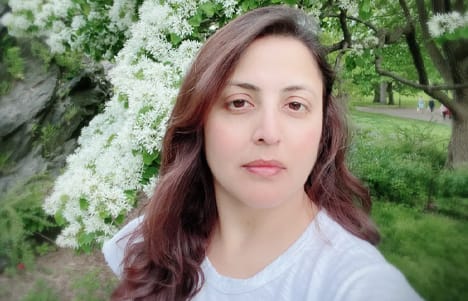
About the Meditation
Meditation session led by Lavina Shamdasani.
The guided meditation begins at 12:38
For centuries Himalayan practitioners have used meditation to quiet the mind, open the heart, calm the nervous system, and increase focus. Now Western scientists, business leaders, and the secular world have embraced meditation as a vital tool for brain health.
Whether you’re a beginner, a dabbler, or a skilled meditator seeking the company of others, join expert teachers in a forty-five-minute weekly program designed to fit into your lunch break. Each session will be inspired by a different work of art from the Rubin Museum’s collection and will include an opening talk, a twenty-minute meditation session, and a closing discussion.
Presented in partnership with Sharon Salzberg and the Interdependence Project. This program is supported in part by the Hemera Foundation.

RELATED ARTWORK

Theme:Change
The process of dismantling ego(s) is a type of change. Change could also be found when Buddhists “rhythmically rotate the drum to beat it at appropriate moments of their ritual”, trying to transform their perceptions.
Buddhist practitioners who engage in the practice of “cutting the ego” (chod) use implements such as this during their meditation and rituals. Traditionally, they would engage in this practice at charnel grounds, places where dead bodies decompose or are eaten by vultures, to facilitate their experiences. These yogis visualize, while reciting verses and mantras of the tantric ritual, that they dismantle their ego. They blow the trumpet to summon spirits and other beings inhabiting the charnel ground and offer them their visualized cut-up body as an offering. They also rhythmically rotate the drum to beat it at appropriate moments of their ritual, which aids in transforming their perceptions.
About the Speaker

Lavina Shamdasani studied the neuroscience, philosophy, and pedagogy of compassion at the Compassion Instituteâ„¢. She has taught Compassion Cultivation Training and self-compassion classes and led book club discussions and meditations at Tibet House US and The Trinity School. She has a degree in pre-med and Biomedical Engineering and has worked in the healthcare industry for several years. Having lived in Kenya, India, and the U.S., Lavina has firsthand experience with a multitude of different religions and cultures and has an international and diverse background. CCT had a transformative impact on her and brought about a positive shift in the overall quality of her life and relationships that inspired her to teach within her community. Lavina has a passion for travel and design.
